Sometimes a confluence of events puts you in a position to think through how you can make what you do more meaningful. For me that confluence of events came last week when I sat down to prepare my presentation for the MAVEN New Media Workshop. I was slated to discuss “Doing Science Out Loud,” and as I opened Keynote in a window wedged beside a Twitter feed that twisted with far too many shame spirals toward hate, I realized that in articulating “Doing Science Out Loud” I needed to stress the importance of acknowledging the humans behind science. It isn’t enough to talk facts and figures. We need to talk jobs, dreams, and sometimes tears. My audience at that talk was filled with awesome humans, but it was a small gathering, and in hopes that maybe my words can help more people make better #scicomm, I’m posting my talk and my slides here.
Originally presented June 21, 2015
I feel like I should say “and now for something entirely different.” This talk is not on science or spacecraft. Not one molecule will get mention in this presentation. For this last talk of the weekend, I’m going to talk to you about science communications through New Media.
This also isn’t going to be your standard “here are the top ten things you should do to build audience and increase your click throughs.” It would be easy to give a presentation that focused, Mashable-style, on all these things. The things is, this is an internet savvy group, and that kind of information all of you can learn just by imitating the successful people around you. I don’t need to give that talk. Instead, I want to focus on those things you can do that will transform your efforts from just being an articulate relaying of facts, to being a story of science that invites your audience in.
This is a really diverse room full of people.
Some of you are graduate students in the sciences – proto-academics – who are learning to communicate science while advancing our understanding of the universe.
Some of you are journalists, already practicing the craft, who are here learning more science that you can use to enrich your stories.
And some of us are scientists and science educators who bridge many different fields. We are the ones who occasionally suffer multiple personality issues as we jump between management and budgets, to talking to school groups, to being interviewed to being the interviewers (all while stealing time to reduce data and write lesson plans somewhere in-between).
We are all different, but we all are the same – We are science communicators. Our audiences overlap, but each of our distinct voices reaches different audiences.
Together, we reach through Twitter alone, 92,417 people as of lunchtime yesterday. This graphic shows through the thickness of the lines how much we overlap. While there is clear overlap, its clear, we aren’t just all preaching to the exact same choir.Let’s think about that; the people in this room have the ability to reach through twitter the same number of people as your typical astronomy magazine reaches.
After watching you talk, tweet and share over the past couple days, I feel like I could say, “You got this! You’re good!” What I’m actually going to do is challenge you to take what you know and with each of your varied audiences thoughtfully work to raise up people’s understanding of how science is a process – a story – they can be part of.
The official title of this talk is “Doing Science Out Loud: Social Media’s role in #scicomm”
(And yes, I’m showing you my title slide on slide 8.)
At a certain level, what this title means is taking the inquiry cycle by which we do science, and translating it out to the public. At each step in this cycle there is a different story for us to tell.
One of the fundamental questions we must answer as science communicators is “Why is it worth doing and funding science?” In addressing this question, we must look at that first phase in the inquiry cycle – the question – and remind people that science is how we answer the fundamental and admittedly not so fundamental questions of: how we got there; how we will, or won’t survive; and is their life in Europa. The questions part of this cycle comes out when we cover stories like the Decadal Surveys, and how NASA debates funding manned missions to Mars or to the Moon. The questions are those easy tweets of “Scientists identify top priorities for research”, or “committee calls for study of [blank].”
These aren’t generally the big click stories, but they have potential if you take them from the bland, lab report “state your question” verbiage and and bring in the why we want to know. Let’s look at an example from Maven. This is a mission designed to answer what rate is Mars atmosphere losing different isotops. Ok. And?…. Why should I care? Why does this matter? What is the context to this mission that makes an expenditure of so many millions worthwhile? Instead of sharing, “NASA studies rate of CO2 Loss on Mars” and linking to some just-the-facts web link, give the why that makes the answer matter. For instance, Maven is at Mars to measure the current rate of atmospheric loss so we can work the story backwards and maybe understand past possibilities for life.
Beyond questions comes money. Its a sad truth that in order to answer these questions, we need money. This is where your stories on “Congress gives” and “Congress taketh away” come into play. We bandy around numbers a lot, but people don’t generally comprehend large numbers, and we aren’t always good at giving these numbers context. Heck, with this particular table that so many of us have tweeted, I admit I don’t even know what all these numbers are.
We probably do better here than we do in any other arena, but there is still room to grow.
In talking about money there are three very important things you can do.
First of all, remind people that science funding is really a jobs program that helps build our national infrastructure. Find a face, the Joe 6-pack of astronomy – or this example, the early career scientist Sarah Horst – who can tie the facts to a relatable human story. Recently, with the Europa mission instrument selection, we were able to see the decision come down through the eyes of someone whose career would be shaped by the outcome. In what may be one of the cruelest ways of doing things, NASA announced which instruments were selected during a press conference. While PI’s knew the outcomes, they weren’t allowed to tell their teams, so many people were tuned in to see if they would would be funded. For those with selected instruments, this would be salary and research for years and years and years.
Sarah started the day tweeting out “Today is Europa day. At 2 PM ET @NASA announces instrument selections for Europa. Will be very good and/or bad day for me and planet friends.” Over the following hours she would explain how many teams’ efforts went into this, saying, “There were 33 instrument proposals total. We don’t know how many will be selected. More than 0 and less than 10 is probably a safe guess.” She also reminded us of the human impact of the decisions. “Truth is most of us are getting bad news today. I’m preemptively sad. I hate sad space feels. Space is for happy feels and doing a science.” At 2pm, with the start of the presser, she shares this, “The mass spec proposal I was on was *not* selected for the spacecraft, but was chosen for further tech dev. We don’t know what that means..” If you go back to her twitter feed and read through May 26 you’ll see that after sharing this heartbreaking news, she professionally covers the meeting, providing context and commentary. 21 tweets in, after quoting out Neibur’s overview, she makes the aside, “(btw I’m tweeting through tears right now bc I’ve been crying off and on for a few hours since I heard but this still matters to me)”…”(and I want to share it with you)” She then went on for 23 more tweets, discussing the instrumentation that was selected and their science. This professionalism and literal working-through-the-tears is a story we rarely (never?) tell, but it’s a story that is true.
This was the ‘our hero lost’ story, and it was powerful. This is how you can meaningfully talk about the consequences of not being funded.
Second, relate the amount of money to something else that your specific audience can empathize with. This is tricky. If you tie the NASA budget to some company’s profit, there are audiences that will turn off because NASA is seen as a handout while profit is the hard earned prize of successful capitalism. If you compare budgets to the cost of the military, others will shout that it is necessary to defend our nation and that we have no mandate to return to the moon or to explore Mars. You have to know your audience. This slide is what worked for me during a recent crowd funding campaign that went on through Google Hangouts.
Finally, third remember your units and be specific. It’s not enough to say Hubble cost $2.5billion. You need to say the relevant version of, “That cost included construction, and has paid for more than 25 years of science. That’s roughly $270,000 per day.”
You also need to give context for this cost. For instance, Hubble is a mission that I pretended to deploy while I was a kid at Space Camp, and today part of that $2.5 billion pays my salary just like it pays the salary of every other teen space cadet that grew up to be granted time with Hubble.
The next stage of doing science is turning funding into infrastructure and investigations. This is where we have our, “Atcama has first light” and “HARPES is installed” stories. Ok, and? Yes, it’s pretty pictures of stuff that will take pretty pictures, but why should we care? Ok, so you’re doing some science, so what? Why else should I care? Sometimes these first light and construction stories give us a chance to tell a bigger picture. Telescopes are generally built in the most remote parts of our world. When the academics and engineers move into these sites, they bring high tech infrastructure and opportunity for locals. The global astronomical community brings billions to developing nations like Chili and South Africa, and we spur forward local industries that wouldn’t be there otherwise. When you hear that some city is to host the Super Bowl, you hear how much money it is anticipated to bring that city. We can, and we should, also talk about the money science facilities bring to their regions when we tell our stories.
Through social media we have the ability to change the dialogue and change how people think about science. Imagine if a city newspaper viewed an academic center getting funded as the same good news as Google opening a local office or H&R Block keeping open their local call center. This might change how people think about funding science.
And sometimes, we also have to pay attention to uglier stories. As the media, we are in a position to lay out facts, and right now the facts people are struggling to lay out are those surrounding the 30m telescope’s construction in Hawaii. For too long, great scientists have been allowed to be assholes as long as they got their science done. Today, we have major players in the astronomical community periodically making racist or at least colonialist statements as they argue that white western scientific desires should take precedence when it comes to the use of indigenous land. How many of you are aware that even though Hawaii has one of the best astronomy programs in the world, only one Hawaiian has gone on to become an astronomer? Compare this to Chili, which is slowly becoming a powerhouse in astronomy in it’s own right.
Ok, new topic.
One of the frustrating truths about the scientific process is the bulk of a researcher team’s time often goes into data acquisition and processing. We see this today with both Dawn and New Horizons. This is the stage where we see the adjective posts. The newest, highest res, closest orbit images – all those images that don’t have a lot of context because we scientists haven’t necessarily figured out what the heck we’re looking at. As communicators, these image releases often become picture box stories that lack real content. We can do better.
As new images come down, it is possible to find ways to create teachable moments. No one does this better than Emily Lakdawalla.On June 16, at 10:30pm local, I caught this tweet from Emily Lakdawalla as I was considering bed. I have to admit, I didn’t know the answer, and in a state of “WHAT IS IT???” I stayed online until there was an answer tweeted at 11:02pm.
Don’t settle for just another picture box story on the newest, biggest, brightest; find some new twist that gives the picture meaning.
This same sound bite coverage tends to also come out of the live coverage of conferences. Hashtags will fill up with 140 character snip-its on how Olivine was found on random world X. These come with no context on why it should matter or what the heck olivine is. We are all guilty of this, but we don’t have to always be that person. As you tweet, try and add in the “This matters because” and the “This compares to [blank] on Earth” and whatever other context makes these facts draw in the curious person who isn’t already inside the story.
The poster sessions are maybe the richest source of out-of-context tweets at conferences. For instance, at AGU last year, there was a poster by a team that makes their own lava. Lots of folks took photos of the poster: photos with unreadable text. In social media you even sometimes still see tweets about their cooking over their science. Sure, it’s cool to make lava, but what about explaining the science? What about how they were testing different compositions to get at flow and solidification rates. Since different minerals melt at different temperatures, their work means you should take care when picking your lava mineralogy so that you don’t burn your meat.

Finally, as the publications come out, don’t forget what you’ve learned above. Tie results to the questions, find that human who chased the solution, give the information a context that matters to your reader so your facts and figures have that face to relate to.
And now I want to take a moment to switch channels for a bit.
In covering science through social media, be aware of your surroundings.
In social media we don’t exist in a vacuum. Our words go out through streams where we will more than likely have our 140 character bites pop up side by side with whatever it is that is trending. This makes it really easy for a friendly message to come off as just plain rude. I didn’t screen capture it, but at one point I had a set of #distractinglysexy posts bracketing a well intentioned message to @AstroSamatha that the ISS would be a little worse off without her women’s touch. Now first off, that totally falls into the land of everyday sexism, where you really should not go. Second of all, while that message might have been seen as intended as sweet on any other day, on that particular day, it suddenly looked like trolling. Don’t be that person. K?
You also need to be careful about being out there selling selling selling when the community around you is on fire. If a rocket blows up, it’s not the time to release that planned story on SpaceX and promote it while everyone is still mourning the lose of that new mission they needed to see fly. If an earthquake just leveled a major city, maybe you should delay your story on how much we need to worry about fraking. Pay attention, and be prepared to kill your scheduled tweets.
And sometimes you just need to go dark and support others in telling the story.
John Stewart did this in reaction to the bombing of the church in South Carolina, and it was powerful. This won’t hurt your rankings. My reaction to that bombing was similar; I saw the cry from Black Twitter that people need to just shut up and listen. So I shut up and listened and spent that day retweeting the minority voices that needed lifted up. I gained followers that day and even if I hadn’t, it was the right thing to do. (I do admit there was one blog post related tweet that day, which I regret).
Listen, and remember that social media and new media are communities.
And remember, sometimes in science communications you need to tell a story that isn’t all about the science.
I’m going to get real serious for minute.
Over the past year, science has been plagued by a series of senior asshats who have through their words and actions promoted sexism and racism. I don’t think any of you could have missed last week’s #TimHunt outpouring against women.
I’ve heard a lot of people argue that we need to just stick to the science, and that we shouldn’t concern ourselves with things like Feynman’s sexual predation – he got a Nobel prize and isn’t that what matters? The thing is, there are going to be people in your audience, maybe even teens, who are going to hear you talk of Feynman as a great man and decide this means Feynman is going to become their role model. They may read “Pardon me, Mr Feynman” and pick up the subtle sexist commentary. Depending on the person, they are either going to think this is ok and emulate it, or think it is accepted as ok and decide maybe science isn’t for them.
In telling the story of science, we need to acknowledge that some of our greats were also assholes. And that some of them still are. Just as we footnote Warner Von Braun, maybe we need to footnote people who actively made science less diverse through their hate. I know that I just lost the Internet by invoking Nazi’s, but… isn’t it time we footnote the harm these scientists do and admit out loud that great scientists aren’t always great humans?
As much as we all have the capacity to inadvertently do harm, you also have the ability to purposely do good. We have a problem in astronomy. We have essentially no minorities. Your average person may not know that because the most famous astronomer today is, well, a black man we all know and can name.
But did you know, just 83 black women have ever gotten a PhD in astronomy and the entire minority list (both genders) composes just 2% of our field? In looking for people to raise up through your coverage, try to find and raise up the up-and-coming people of color. Create more role models, and help promote those who bias tends to leave ignored.
Neil Tyson isn’t the only articulate person of color in astronomy. Derek Pitts at the Franklin Institute is one of my favorites communicators. Find new favorite voices by purposely seeking to listen to the scientists and science communicators who aren’t just another white face.
We also have a problem with being ablist. Again, the average person may not know this because the most famous living physicist is a badass dude in a wheelchair who will run you over if you ask a stupid question. But in general, there are disproportionately few people with disabilities in the sciences, and there are basically no role models.
Here, too, you can make the choice to try and include people with disabilities in your coverage. For instance if you want to talk cratering and small body surface evolution, talk to Dr Jim Richardson at Arecibo. His seeing eye dog is awesome, and his science is more rock solid than some of the asteroids.
You can make the choice to include new voices. You can seek out the unusual suspects who are doing the work the PI’s report on. You can find the women, the minorities, and all the diverse faces who are in the trenches doing the work your already reporting on. You can change how people perceive the face of astronomy.
If we tell the story of science in ways that includes the humanity of the scientists, in all its beautiful and all of its broken forms, we will be better science communicators.
We can be better.
What world are you going to create?


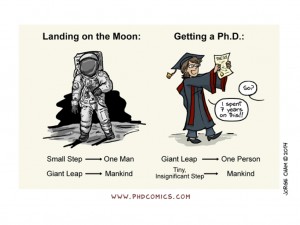







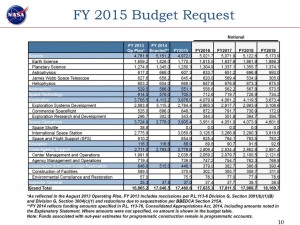

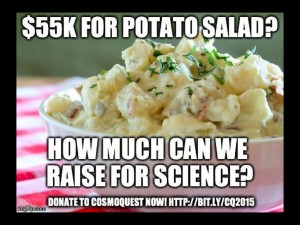

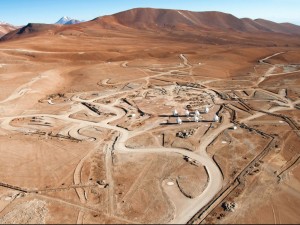


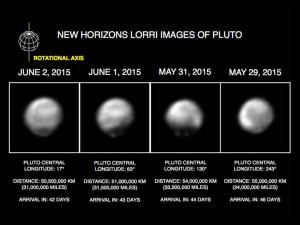
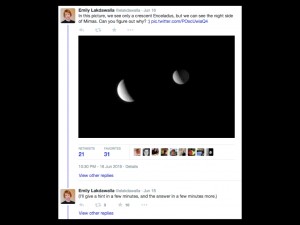






Beautiful words, Pamela.
This and others of your startsryder’s posts have strongly resonated in me, as science teacher/communicator and as human being. Thanks for sharing the human side of doing science.
Definitely, I will keep reflecting on your talk, and ways to apply it on my teaching/communication. And please, keep showcasing examples of great people of different minorities that we can pull on as role-models to share.
Totally agree: “we can be better”…
Lots of information, but I do have nitpick. Saying that supporting the The 30M Telescope is being a “asshole” isn’t really fair. The land is state land, not protected land such as a reservation that KPNO utilizes. Also not all locals in the area oppose the construction of the telescope. Lastly there are economic reasons that are legitimate that the telescope agreement helps. It isn’t just a bunch of white folks getting a new toy as you imply.